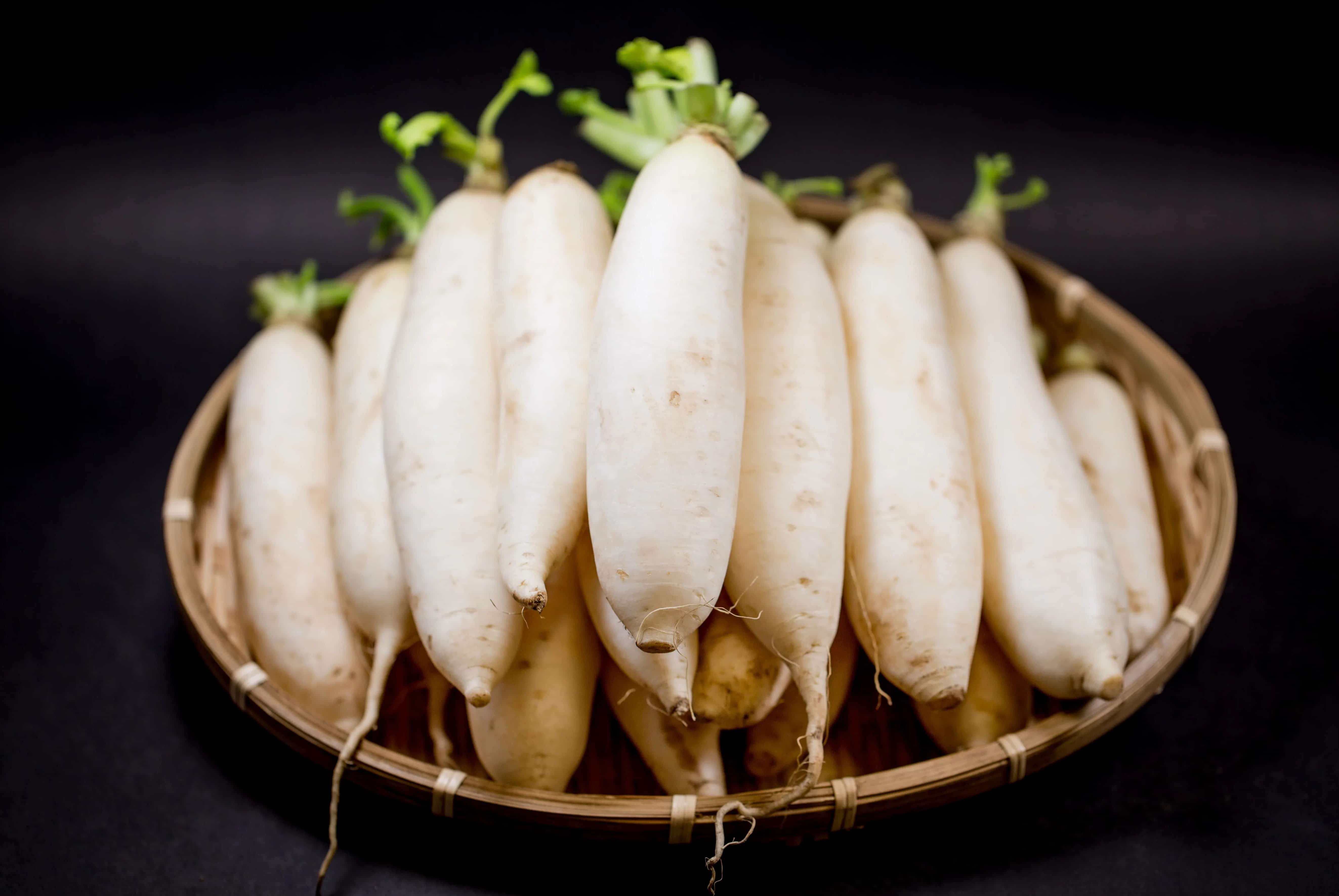
Mooli, also known as daikon or white radish, is a root vegetable that packs a punch in both flavor and nutrition. Originating from East Asia, this versatile veggie has found its way into kitchens worldwide. But what makes mooli so special? Mooli is not just a crunchy addition to salads; it boasts numerous health benefits, including aiding digestion and boosting the immune system. Whether you’re a seasoned chef or a curious foodie, understanding the unique qualities of mooli can elevate your culinary game. Ready to learn more? Let’s dive into 20 fascinating facts about this incredible root vegetable!
Key Takeaways:
- Mooli, also known as daikon, is a versatile and nutritious root vegetable popular in Asian cuisine. It's low in calories, high in fiber, and rich in vitamin C, making it a healthy and delicious addition to your meals.
- Whether you're a food lover or a gardening enthusiast, mooli has something for everyone. From its cultural significance to its culinary uses and nutritional benefits, this unique vegetable is a must-try for anyone looking to explore new flavors and experiences.
What is Mooli?
Mooli, also known as daikon or white radish, is a root vegetable popular in Asian cuisine. Its crisp texture and mild flavor make it a versatile ingredient in many dishes. Let's dive into some fascinating facts about this unique vegetable.
Nutritional Benefits of Mooli
Mooli isn't just tasty; it's packed with nutrients that can benefit your health in various ways.
- Low in Calories: Mooli is a low-calorie food, making it an excellent choice for those looking to maintain or lose weight.
- Rich in Vitamin C: This root vegetable is a great source of vitamin C, which helps boost the immune system.
- High in Fiber: Mooli contains a significant amount of dietary fiber, aiding digestion and promoting gut health.
- Contains Potassium: Potassium in mooli helps regulate blood pressure and supports heart health.
- Antioxidant Properties: The antioxidants in mooli can help combat oxidative stress and reduce inflammation.
Culinary Uses of Mooli
Mooli's versatility in the kitchen is one of its standout features. Here are some ways it can be used in cooking.
- Pickled Mooli: In many Asian countries, mooli is often pickled and served as a side dish.
- Salads: Its crisp texture makes it a perfect addition to fresh salads.
- Soups and Stews: Mooli can be added to soups and stews, where it absorbs flavors beautifully.
- Stir-fries: It can be sliced or shredded and used in stir-fries for added crunch.
- Juices and Smoothies: Mooli juice is popular for its detoxifying properties.
Growing Mooli
If you have a green thumb, growing mooli can be a rewarding experience. Here are some interesting facts about cultivating this vegetable.
- Fast Growing: Mooli grows quickly, often ready for harvest in just a few weeks.
- Cool-Season Crop: It thrives in cooler weather, making it perfect for spring and fall planting.
- Soil Requirements: Mooli prefers well-drained, sandy soil to grow properly.
- Spacing: Proper spacing is crucial as mooli roots need room to expand.
- Pest Resistance: Mooli is relatively resistant to pests, making it easier to grow organically.
Cultural Significance of Mooli
Mooli holds a special place in various cultures, especially in Asia. Here are some cultural aspects of this vegetable.
- Symbol of Good Luck: In some cultures, mooli is considered a symbol of good luck and prosperity.
- Traditional Medicine: Mooli has been used in traditional medicine for its supposed health benefits.
- Festivals: In Japan, mooli is celebrated during certain festivals, highlighting its cultural importance.
- Art and Literature: Mooli often appears in Asian art and literature, symbolizing simplicity and purity.
- Culinary Heritage: Many traditional dishes across Asia feature mooli, showcasing its long-standing culinary heritage.
The Final Scoop on Mooli
Mooli, also known as daikon radish, packs a punch in both flavor and nutrition. This crunchy root vegetable is a staple in many Asian cuisines, offering a low-calorie option rich in vitamin C and fiber. Its versatility shines through in dishes like salads, soups, and pickles. Beyond the kitchen, mooli has been used in traditional medicine for its potential digestive and detoxifying benefits.
Growing mooli is relatively easy, making it a great addition to home gardens. It thrives in cooler climates and can be harvested in just a few weeks. Whether you're a seasoned cook or a gardening newbie, mooli offers something for everyone.
So next time you're at the market, grab some mooli and experiment with this nutritious and delicious root. Your taste buds and body will thank you!
Frequently Asked Questions
Was this page helpful?
Our commitment to delivering trustworthy and engaging content is at the heart of what we do. Each fact on our site is contributed by real users like you, bringing a wealth of diverse insights and information. To ensure the highest standards of accuracy and reliability, our dedicated editors meticulously review each submission. This process guarantees that the facts we share are not only fascinating but also credible. Trust in our commitment to quality and authenticity as you explore and learn with us.


